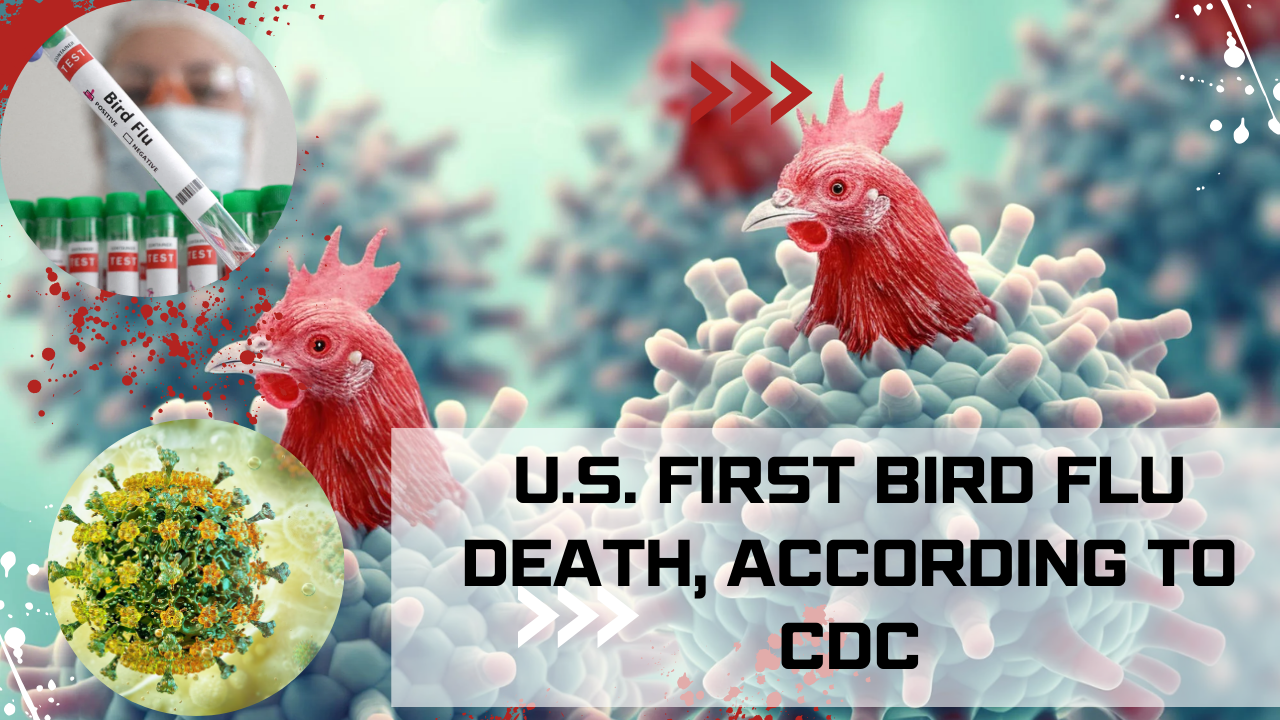The first U.S. death from bird flu has been reported. This happened to an individual from southwest Louisiana, who was reported as an inpatient last month. This is by now the most serious bird flu case concerning the whole outbreak in the country so far. News of the death was announced by the Louisiana Department of Health on Monday, but the details were withheld due to the concerns of patient privacy.
Details Related to the Case
- Age and Health: The patient was more than 65 years and presumably had previous health maladies.
- Source of Infection: Acquired through exposure to backyard non-commercial flock and wild birds.
- Public health response: An investigation found no evidence of human-to-human transmission or other cases of H5N1.
Bird flu past record and latest concerns
The present outbreak of bird flu has infected well over 65 people in the country and around the globe, who mostly have contact with infected poultry or dairy cattle. Most fresh cases have resulted in mild symptoms; however, it should be noted that earlier epidemics of bird flu were much worse. According to WHO statistics, about 50% of the 950 reported cases globally have died.
If Fleming Nuzzo, the director at the Pandemic Center at Brown University, has her way, “I wouldn’t count on future infections being mild. Bird flu has proven to be a nasty virus over decades.”
Severity of Recent Cases
In November, a British Columbia teenage girl aged 13 was hospitalized in Canada for bird flu. Her symptoms required the use of extracorporeal membrane oxygenation (ECMO) for her to live.
“This goes to show how the severity of infections can be erratic,” Nuzzo said. “The Louisiana death shouldn’t be dismissed just because of very poor prior health.”

Genetic Insights into Virus
According to the Centers for Disease Control and Prevention (CDC), the particular strain of the H5N1 virus that causes mild to severe illness was analyzed and found to be a genotype: D1.1. It is different from that of the one affecting dairy cattle as both are under the same clade 2.3.4.4b which is globally circulating.
“This strain has alarming mutations that are likely responsible for the infection in Louisiana,” said Malrpoo. However, further human infection evidence has been found either in the U.S. or Canada.
CDC’s Assurance and Precautions
The CDC also mentioned that “no virological changes of concern spreading in the wild birds, poultry, or livestock would raise the risk to people” while indicating that the general public should not have much risk. Medical experts, in this case, highly advise against touching anything wild bird, poultry, or possibly contaminated surfaces.
It is commonly recommended to wash hands after touching things like bird feeders. Pets can also be infected by eating raw meat or drinking raw milk containing the virus.
Conclusion
Experts, however, want people to stay alert because the risk of human transmission continues to be less. It brings a bird flu that works without warning and needs continued observation and precaution to avoid any possible exposure.

